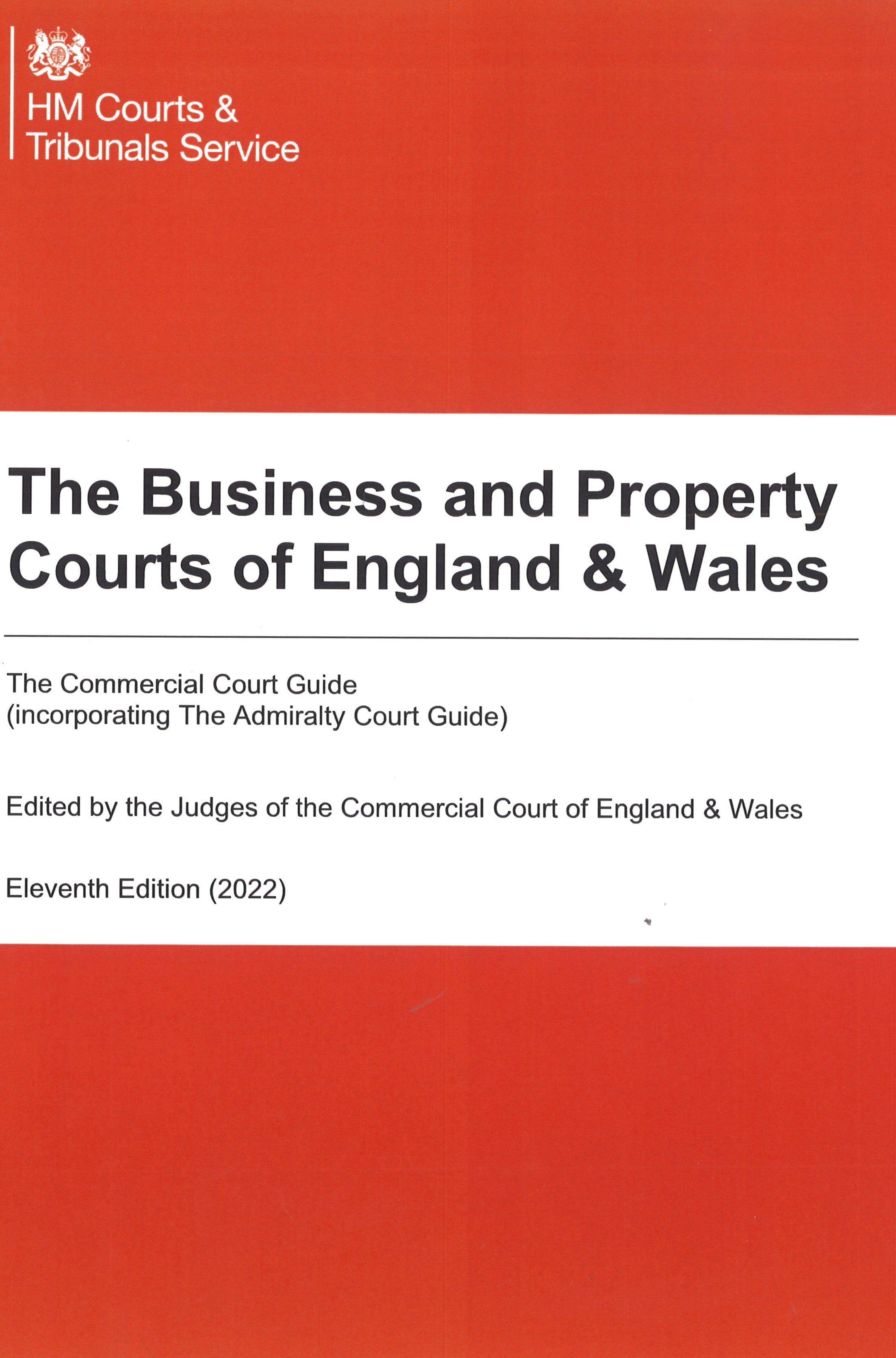Click the image to open the 11th edition of the Guide.
The Commercial Court Guide sets out the procedures which are normally adopted in the Commercial Court to ensure effective case management. Its provisions reflect the practical experience of Commercial Judges and practitioners of how the Civil Procedure Rules, which govern civil litigation in England & Wales, can best be applied to commercial disputes.
The Civil Procedure Rules apply to the Commercial Court because it is a part of the King’s Bench Division, one of the three Divisions of the High Court of Justice of England & Wales. (The others are the Family and Chancery Divisions.) Although it has three Divisions, the High Court, which is the central national Court for England & Wales, is a single entity. For most of the legal history of England & Wales, however, the organisation of the Courts was very different. For centuries, there were three separate Courts of common law: the King’s (or, sometimes, Queen’s) Bench; the Common Pleas; and the Exchequer of Pleas. All three had largely overlapping jurisdiction, but each had its own rules and procedures. Meanwhile, equity was administered in a fourth Court, the Chancery, while yet further Courts exercised specialist jurisdictions over Admiralty cases and what would now be called family law.
19th Century law reformers condemned these arrangements as confusing and inefficient. In the 1870’s, the old Courts were abolished by the Judicature Acts, and replaced by the single High Court, split into three Divisions, which exists today. The new Court was given a new and uniform procedure, the Rules of the Supreme Court. Because the Rules were an untidy combination of procedures adopted from all of the old Courts, King’s Bench cases became subject to procedures which had been created for very large Chancery cases about land. When they were applied to smaller cases about tort or breach of contract, they often caused unnecessary delay and expense. Commercial litigants in particular protested about this, and the Commercial Court was established in 1895 in response to these and other complaints from the commercial world.
Since the Commercial Court was a reaction to delay and inefficiency, it was important for the Commercial Judges to find ways to avoid these problems. But the Rules of Court were not changed when the Court was created, and so the Judges had to work within existing procedures. By making use of often-overlooked Rules, and by imaginative use of judicial discretion, Sir James Charles Mathew, the first Commercial Judge, developed flexible and efficient procedures. These were adopted by later Judges.
The new Court’s procedures were recorded in print by Mathew’s eldest son, Theo. A well-known humorist best-remembered today as the author of ‘Forensic Fables’, Theo was a practising barrister who appeared occasionally in the Commercial Court for several years, before becoming a specialist in defamation law. In 1902, he published ‘The Practice & Procedure Of The Commercial Court’. Later editions were edited by Commercial Judge Sir Anthony Colman, and the book remains in print.
In the 1980’s, however, Commercial Judges and practitioners agreed that it would be a good idea for the Court to publish its own Guide to the way in which the Judges applied the Rules of Court in commercial cases. The 1st edition of ‘The Guide To Commercial Court Practice’ was published in September 1986. The Guide has since expanded to include the practice and procedure of the Admiralty Court, and has been revised and updated to take account of the replacement of the Rules of Court by the Civil Procedure Rules. The current edition of what is now ‘The Commercial Court Guide’ is the 11th, published in 2022. Other parts of the High Court, including the Technology & Construction Court, the King’s Bench Division, and the Chancery, have followed the Commercial Court’s example by publishing their own Guides to their practices and procedures.
The Commercial Court Guide occupies an interesting position among the materials which govern civil procedure. It is not formally a part of the Civil Procedure Rules: it is not a Rule, nor is it a Practice Direction. Strictly speaking, therefore, it is not automatically binding on Commercial Court litigants. However, it sets out the best practice which the Commercial Judges expect litigants to follow The Judges take account of whether or not parties have complied with the Guide in exercising their discretion under the Rules, including, most importantly, their discretion in relation to costs. In addition, orders made at the case management conference in the Commercial Court usually require the practices and procedures in the Guide to be followed, which has the effect of making the Guide binding in individual cases.
Some of the Guide’s provisions were suggested by practitioners or litigants, and the Commercial Judges welcome input from Court users. Any ideas for changes to the Guide, or other comments about the working of the Court, can be submitted through the Commercial Court Users Committee, by letter to The Secretary to the Commercial Court Users Committee, 7 Rolls Building, Fetter Lane, London EC4A 1NL, or by e-mail to comct.listing@justice.gov.uk.

